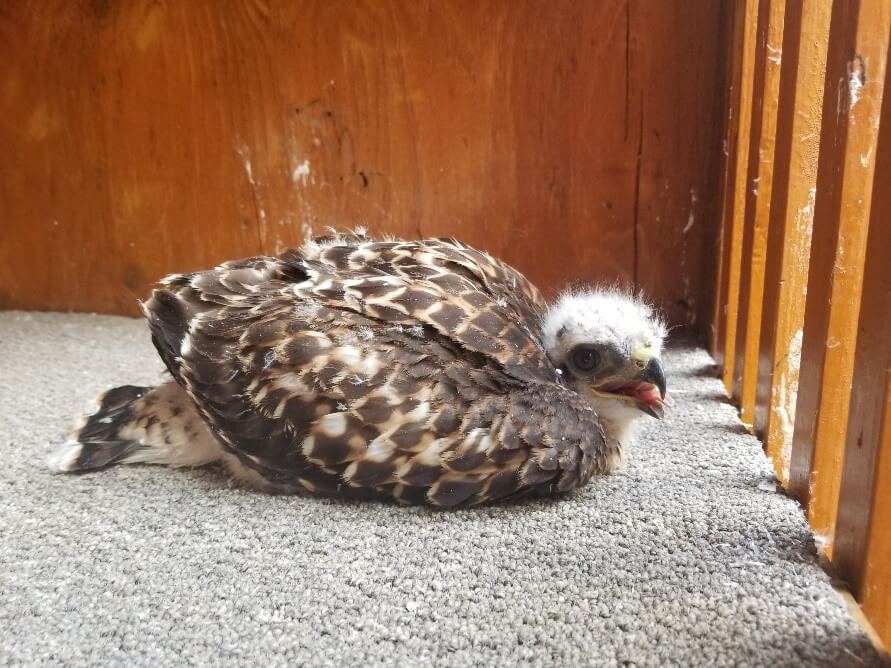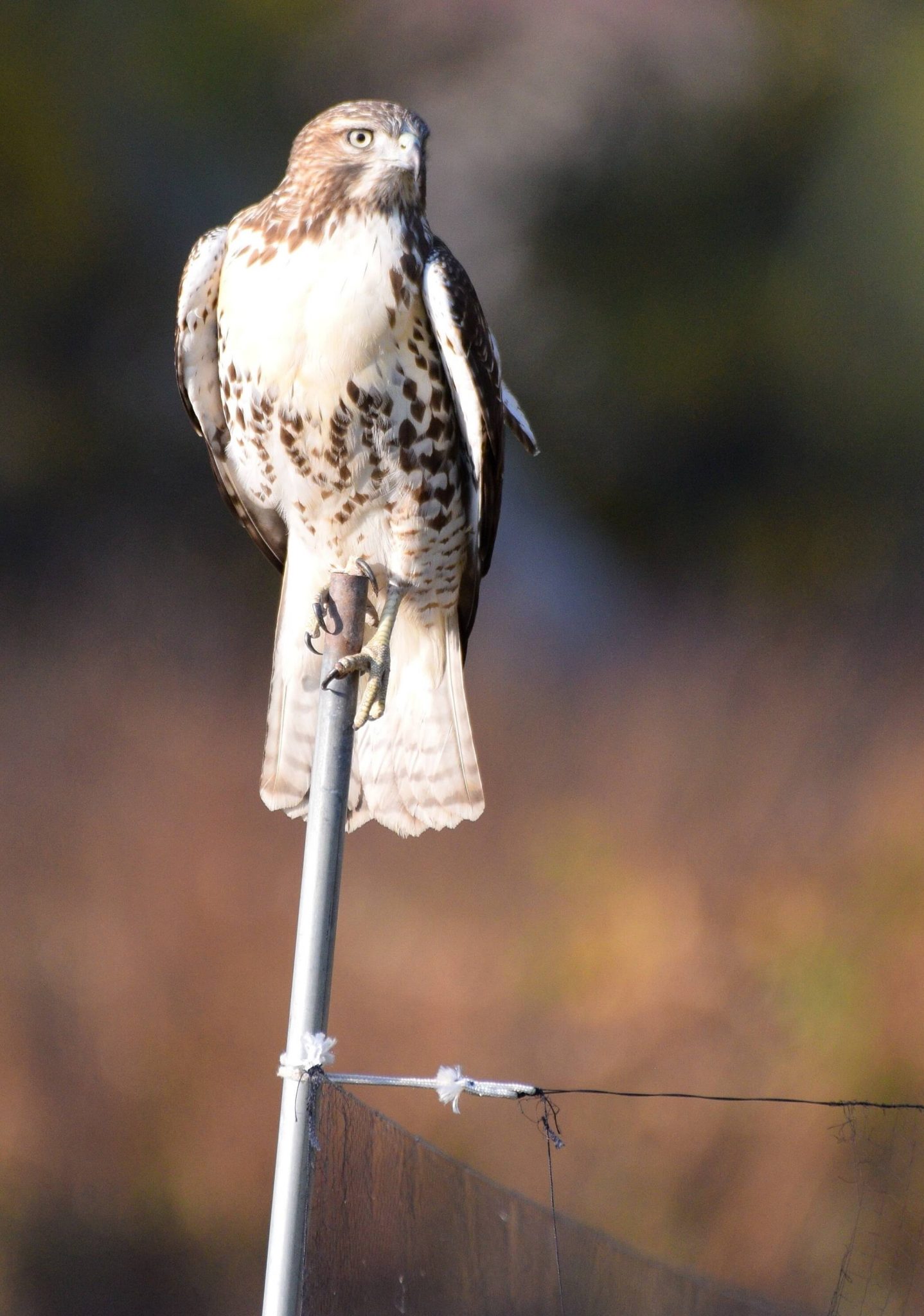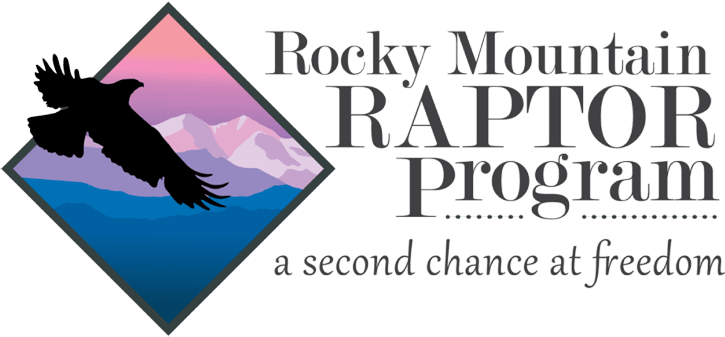Sometimes it can feel like much of the news relating to bird conservation is troubling, but occasionally we are rewarded with a happy-ending story. Today’s tale is a bit of an adventure involving a Red-tailed Hawk which illustrates how bird banding illuminates our knowledge—and how people can play a positive role in helping birds.

The star of our story, soon after he was brought from Wellington to the Rocky Mountain Raptor Program in Fort Collins on June 6.
Fast-forward to October 2020 and our bird banding station at Barr Lake State Park. Bird Conservancy banders were excited to notice that a young Red-tailed Hawk that was hanging around was already wearing a band. Eventually, the bird flew into one of our banding mist nets, enabling us to get a closer look. The band was checked in the USGS Bird Banding database, revealing this was one of the young birds that was originally rescued by RMRP. The hawk was released, and his condition (healthy!) and new location recorded.

All grown up! Red-tailed Hawk (Band #1947-47638) photographed by Susan Rosine at Barr Lake on October 7, 2020.
Bird banding is important for studying the movement, survival and behavior of birds. About 60 million birds representing hundreds of species have been banded in North America since 1904. About 4 million bands have been recovered and reported.
Thank you to our friends at Rocky Mountain Raptor Program for the critical rescue, rehabilitation and avian conservation education work they do!



